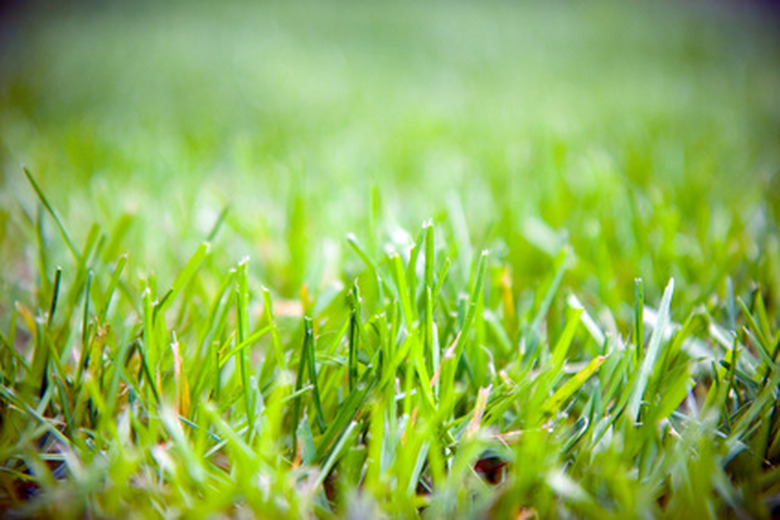What Is The Difference Between Weed And Feed And Turf Builder?
Turf Builder is a trademark of Scotts, a fertilizer manufacturer, whereas "weed & feed" is a generic term for any fertilizer that contains selective herbicides that target dandelions, chickweed, knotweed and other problem weeds while sparing the grass any damage. Scotts Turf Builder Weed & Feed is one such weed-killing fertilizer, and similar products from other manufacturers include Vigoro Weed & Feed, Pennington Ultragreen Weed & Feed and Bandini 26-3-5 Weed & Feed.
You can find a Turf Builder product for virtually every lawn condition, and if weeds aren't a problem, you can choose one of the other Turf Builder products, such as Turf Builder Starter, Turf Builder WinterGuard for fall application or simply the all-purpose Turf Builder for general use.
Tip
"Weed & feed" is a generic name for lawn fertilizer that contains an herbicide for weeds, whereas Turf Builder is a trade name of Scotts, a fertilizer manufacturer.
What's in Scotts Turf Builder?
Fertilizers contain a mixture of three nutrients that plants need for healthy growth: nitrogen (N), phosphorous (P) and potassium (K). Lawn fertilizers in particular contain a high percentage of nitrogen, which is the nutrient that feeds the blades and turns them green, and they typically contain little to no phosphorous, which nourishes the roots, or potassium, which is needed to fend off disease. The ratio of nutrients, known as the N-P-K ratio, is usually displayed on the label.
Turf Builder is a 32-0-4 blend, and Turf Builder WinterGuard, with a 32-0-10 ratio, provides more potassium to keep the grass healthy through the winter. Turf Builder Starter, with a 24-25-4 ratio, is one of the few lawn fertilizers that is high in phosphorous because it's designed to nourish the roots of young, growing grass.
What's in Weed & Feed Fertilizers?
As the name suggests, weed & feed fertilizers contain a mixture of lawn fertilizer and weed-control chemicals. The fertilizer is usually high in nitrogen because it's designed to make the lawn green. The weed killer gets distributed along with it when you spread the product on the lawn. Scotts Turf Builder Weed & Feed contains a 28-0-3 fertilizer, and the weed killers are 2,4-Dichlorophenoxyacetic acid and mecoprop-p. Other weed & feed products contain similar cryptically named chemicals, and luckily, you don't have to know what these names mean for the weed killer to work.
Cautions Concerning Weed & Feed Fertilizers
Not all landscapers are in agreement that using a weed & feed mixture is a good idea. When you distribute a granular fertilizer with a spreader, the weed killer can be distributed unevenly, and weeds can still grow. Moreover, the weed killers can be harmful to birds, and when washed away, they can find their way into waterways and the fish that swim there, ultimately ending up in the bodies of the people who eat the fish, increasing the risk of cancer.
The weed killers have to settle on the leaves of the weeds to do their work, so they won't control crabgrass or weeds that haven't yet emerged. The best time to kill unsprouted weeds is in the spring, and you can do the job with corn gluten meal (CGM), an environmentally safe product. It's important to note that CGM has no effect on weeds that have already sprouted; it's used as a pre-emergent to treat weeds that have not yet emerged. If you treat the grass for weeds yearly in the spring, you might not ever need a weed & feed fertilizer. You can also avoid spreading weed killer by getting out your dandelion fork and manually removing the dandelions from your lawn.
